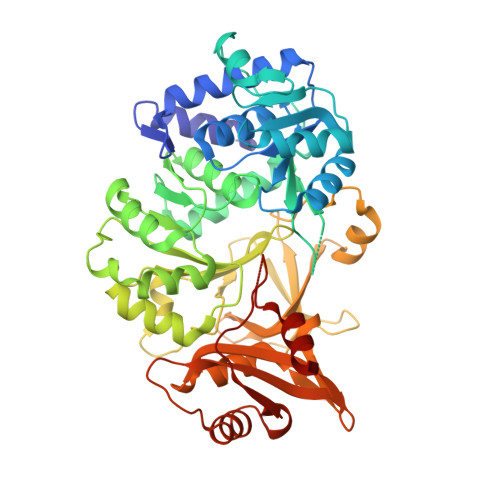Broad Spectrum Enantioselective Amide Bond Synthetase from Streptoalloteichus hindustanus.
Tang, Q., Petchey, M., Rowlinson, B., Burden, T.J., Fairlamb, I.J.S., Grogan, G.(2024) ACS Catal 14: 1021-1029
- PubMed: 38269041
- DOI: https://doi.org/10.1021/acscatal.3c05656
- Primary Citation of Related Structures:
8PPP, 8PYX, 8PYY - PubMed Abstract:
The synthesis of amide bonds is one of the most frequently performed reactions in pharmaceutical synthesis, but the requirement for stoichiometric quantities of coupling agents and activated substrates in established methods has prompted interest in biocatalytic alternatives. Amide Bond Synthetases (ABSs) actively catalyze both the ATP-dependent adenylation of carboxylic acid substrates and their subsequent amidation using an amine nucleophile, both within the active site of the enzyme, enabling the use of only a small excess of the amine partner. We have assessed the ability of an ABS from Streptoalloteichus hindustanus (ShABS) to couple a range of carboxylic acid substrates and amines to form amine products. ShABS displayed superior activity to a previously studied ABS, McbA, and a remarkable complementary substrate specificity that included the enantioselective formation of a library of amides from racemic acid and amine coupling partners. The X-ray crystallographic structure of ShABS has permitted mutational mapping of the carboxylic acid and amine binding sites, revealing key roles for L207 and F246 in determining the enantioselectivity of the enzyme with respect to chiral acid and amine substrates. ShABS was applied to the synthesis of pharmaceutical amides, including ilepcimide, lazabemide, trimethobenzamide, and cinepazide, the last with 99% conversion and 95% isolated yield. These findings provide a blueprint for enabling a contemporary pharmaceutical synthesis of one of the most significant classes of small molecule drugs using biocatalysis.
Organizational Affiliation:
Department of Chemistry, University of York, Heslington, York YO10 5DD, U.K.
















